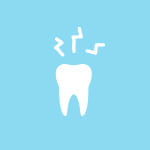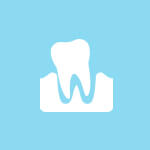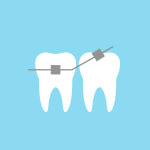Gum, caramel, tootsie rolls, peanut butter, toffee, taffy, granola bars, frozen candy bars

It’s not going to be easy at first and, in the beginning, foods you can eat will be limited. You’ll want to stick to foods that are soft, fluffy, and easily mashed up. Pancakes, oatmeal, bananas, soups, cooked vegetables, applesauce, mashed potatoes, mac & cheese, and soft ice cream – just to suggest a few. Stay away from foods that are hard, crunchy, sticky, or tough.

Please avoid these foods while wearing braces.
Gum, caramel, tootsie rolls, peanut butter, toffee, taffy, granola bars, frozen candy bars
Apples, carrots and other raw vegetables, chewing ice, nuts
Popcorn, chips, hard tacos, celery
Bagels, corn on the cob, sandwiches, steak, ribs, beef jerky

Your mouth is going to feel sensitive and a bit sore when you first get your braces put on. To help alleviate the soreness, you can rinse your mouth with a salt-water solution or take an over-the-counter analgesic. If your braces are rubbing or poking your mouth, you can use dental wax (available at the office or your local drugstore) to cover problem areas and prevent blisters.

Part of the process of creating your new, beautiful smile is moving your teeth; to move them, they need to loosen up first. “Loose teeth” are a natural part of the process. Once your teeth are in the right place, they will settle into their new position.

Inevitably, something is going to come loose. A bracket will loosen or a wire may pop out of place. If it’s a flexible wire, you might be able to push it back into place using tweezers. If you can’t move it with tweezers, you can use a pencil eraser or the back of a pen to push the offending wire down. Dental wax will also be your friend; place a small amount on the spot to cover the problem area. Next, schedule an appointment to have the wire, bracket, or band repaired.

It is always important to brush and floss your teeth to keep them clean and healthy – with braces, it’s more important than ever. Consistent brushing and flossing will ensure that your gums and teeth remain healthy throughout your treatment.
There are orthodontic advantages to treating certain cases in two separate stages. The goal of the Phase I treatment is to develop well-oriented jaws, healthy bones and gums, and adequate room for permanent teeth. Children sometimes exhibit early signs of jaw problems as they grow and develop. For example, an upper or lower jaw that is growing too much or not enough can benefit from early orthodontic treatment. Crowded jaws can also benefit from early observation and treatment. This early correction can prevent the removal of permanent teeth due to excessive overbite or overcrowding. If you believe a problem exists, you are most likely correct in your assessment.The treatment length for Phase I is generally 6-12 months long.
Generally, we use a growth-modifying appliance for skeletal problems, limiting the need for braces, to create necessary space for patients between 8-12 years of age. In our practice, approximately 25 percent of patients evaluated between these ages undergo early treatment. Our goals for these cases are:

During Phase II treatment, our goal is to position all of the permanent teeth to maximize their appearance and improve their functional integrity. This is best accomplished by placing braces on all of the upper and lower teeth. The treatment length for Phase II is generally 12-18 months long.
